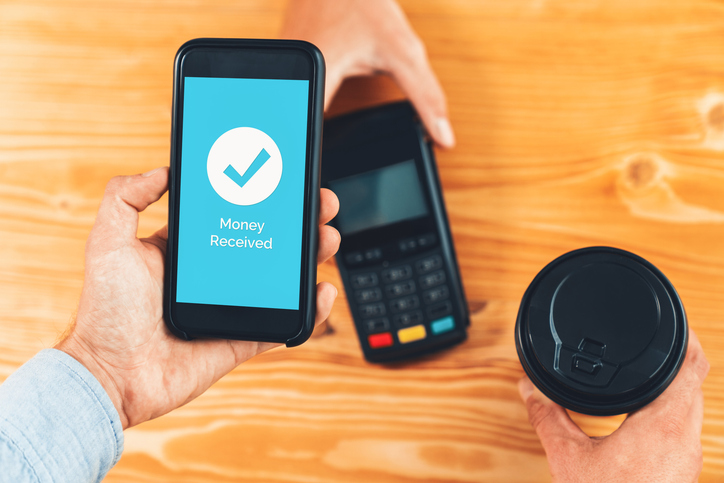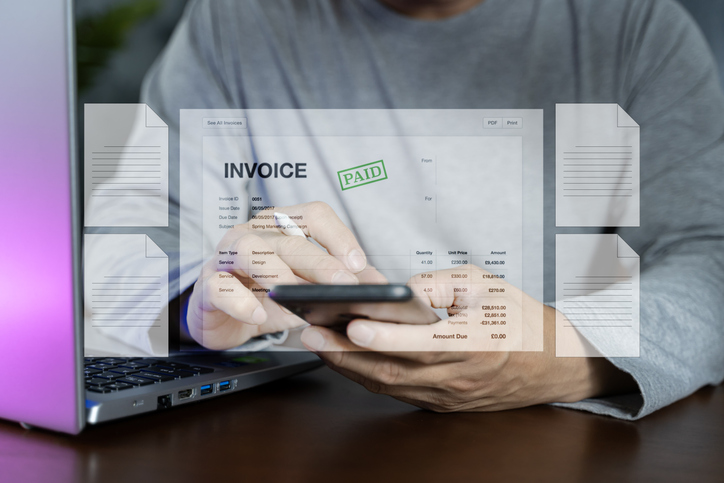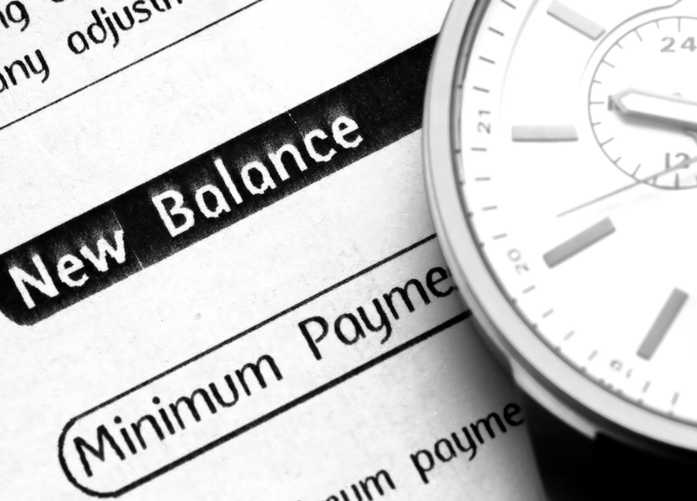As a small business owner, I understand how vital it is to maintain steady cash flow. In the early days, I learned the hard way how late payments can disrupt everything—not just your finances, but your peace of mind too. I can still remember those nights spent worrying over overdue invoices. It was not just the missing money; it was the stress, the awkward conversations with clients, and the constant anxiety.
I realized I had to make some changes.
So, I took a step back and revamped my payment process. I made a few key adjustments, and it made all the difference. I started simplifying my invoicing, offering more flexible payment options, and setting clear expectations from the beginning. Before long, I noticed I was getting paid on time, and clients were more responsive.
These small changes had a big impact.
In this guide, I want to share with you the five steps that worked for me. They helped streamline my payment process and strengthened my relationships with clients. If you are facing similar issues, I think these strategies could be just what you need too.

Step 1: Understand Why Payments Are Late
Before I could tackle the issue of late payments in my business, I needed to figure out why they were happening. Once I understood the reasons behind the delays, I was able to take steps to prevent them.
Common Reasons Payments Are Late
- Confusing Invoices: I remember a time when a client delayed payment because my invoice wasn’t clear. They couldn’t make sense of the charges, and instead of asking for clarification, they just put off paying until they could sort it out. That experience taught me how important it is to send invoices that are straightforward and easy to understand. If you’re looking to improve your invoicing, this guide on invoice best practices is worth checking out.
- No Reminders: I used to assume clients would remember their payment deadlines. But the reality is, everyone gets busy. I had one client who simply forgot about an invoice until I followed up weeks later. That experience made it clear that even the most dependable clients need a nudge sometimes. Automated reminders can really help, and this article on payment reminder strategies has some great tips.
- Limited Payment Options: At one point, I was only accepting payments through bank transfers, which wasn’t convenient for some of my clients. I noticed that the clients who had to go out of their way to pay me were often the ones who delayed. But when I offered more options, like credit card payments, I started to see faster payments. If you’re thinking about adding more payment options, this overview of payment methods might be useful.
- Disagreements or Questions: I’ve also had clients hold off on payment because they were unhappy with part of the work or had questions about the service. They didn’t bring it up right away, so the invoice just sat there unpaid. That taught me the value of checking in with clients and addressing any concerns before sending the bill. For more tips on keeping communication open, this article on client communication strategies is a good read.
Why This Matters
Understanding why payments are late is the first step toward fixing the problem. For instance, when I realized that unclear invoices were causing delays, I made it a priority to improve how I billed clients (which I’ll talk about in Step 2). And when I saw that clients often forgot about payments, I set up reminders (which I’ll cover in Step 5).
By addressing these issues, I made it easier to get paid on time.
Key Takeaway: Understanding why payments are late gives you the insight you need to take action. By fixing these issues, you can make sure payments come in smoothly and on time. In my experience, small changes can make a big difference.

Step 2: Optimize Your Invoicing Process
To get paid faster, I’ve found that improving how I handle invoices is key. A clear invoice helps avoid confusion and ensures my clients know exactly what they’re paying for and when the payment is due.
Make My Invoices Clear and Detailed
An invoice isn’t just a bill—it’s a way to communicate with clients. I learned this lesson when a client delayed payment because they didn’t understand my invoice. That experience made me realize how important it is to keep invoices clear and detailed. Here’s how I approach it now:
List Services or Products Separately
I used to lump everything together into one line, thinking it was simpler. But when I started listing each service or product individually, clients had fewer questions and paid more quickly. Now, I make sure to describe each item and include its price. For tips on structuring your invoices, this guide on invoice best practices is helpful.
Spell Out Payment Terms
I found that payment delays often happened because my terms weren’t clear enough. Now, I always include the payment terms right on the invoice. I specify the due date, the total amount owed, and any late fees. For example, “Payment is due within 30 days of the invoice date. Late payments will incur a 1.5% fee per month.” This simple change has made a big difference in getting paid on time. If you want to learn more about setting effective payment terms, this article on payment terms and conditions is a good resource.
Include My Contact Information
Making sure my contact details are easy to find on the invoice has made it easier for clients to reach out with any questions. This small step helps prevent delays caused by confusion. If you’re looking for more on effective communication, this resource on client communication strategies is worth checking out.
Use Simple Templates
Early on, I didn’t pay much attention to how my invoices looked, but I quickly realized that using a consistent template not only presents my business well but also makes sure that all the necessary details are included. If you’re searching for templates, this collection of invoice templates is a great starting point.
Send Invoices Quickly
Timing matters when it comes to getting paid. I’ve learned that the sooner I send an invoice, the sooner I get paid. Waiting too long to send my invoice can make it seem like payment isn’t urgent, which might cause it to be overlooked.
- Invoice Right After Finishing the Job: I used to wait a few days after completing a project to send the invoice, thinking it would be more convenient for the client. But I found that sending it right after finishing the job keeps payment on the client’s mind and sets the expectation for prompt payment. Now, I make it a habit to send the invoice as soon as the work is done. For more on when to invoice, this article on invoicing timing offers some useful insights.
- Automate for Ongoing Services: I offer ongoing services, and for a while, I was manually sending invoices each month. It was time-consuming, and sometimes I forgot. Automating my invoicing with tools like QuickBooks or FreshBooks has saved me a lot of time and makes sure I never miss a billing cycle. If you provide ongoing services, I’d recommend setting up automatic invoicing.
Key Takeaway: By improving how I handle invoices—making sure they’re clear, detailed, and sent promptly—I’ve been able to reduce the chances of payment delays. These small adjustments have made a big difference in my business, helping me get paid faster and keep my relationships with clients strong. I hope these insights help you as much as they’ve helped me.

Step 3: Implement Flexible Payment Options
Making it easier for clients to pay has been a game-changer for me. I’ve noticed that when the payment process is straightforward, clients are more likely to pay on time, which has helped keep everything running smoothly.
Offer Multiple Payment Options
These days, clients expect to have choices in how they can pay. If you limit those options, it can slow down payments. Here’s what has worked well for me:
- Credit/Debit Card Payments: I quickly realized that accepting credit and debit cards is essential. Services like Stripe, Square, and PayPal make it easy to process card payments, whether online or in person. After I added these options, I noticed payments started coming in much faster.
- Bank Transfers: I used to rely on traditional bank transfers, but switching to ACH payments made things a lot easier, especially for larger invoices. ACH transfers are faster and often cheaper than wire transfers, and clients appreciate the convenience.
- Digital Wallets: More of my clients now prefer using digital wallets like Apple Pay, Google Pay, and PayPal. These options make it easy for them to pay using their smartphones or other devices, which has definitely sped up the payment process.
- Payment Links: Including a payment link in my invoices or emails has been a simple but effective change. Clients can just click the link and pay right away, which has cut down on delays.
Offering different payment methods has made it easier for clients to pay on time, which helps me keep everything on track.
Automate Payments for Ongoing Services
For ongoing services like monthly retainers or subscriptions, setting up automatic payments has saved both my clients and me a lot of time and effort. Here’s what has worked for me:
- Recurring Billing: I used to manually send invoices every month for ongoing services, which was time-consuming and easy to forget. Switching to software that automates billing, like QuickBooks or FreshBooks, has been a lifesaver. Clients are billed regularly, which ensures payments come in on time and keeps my cash flow steady.
- Payment Plans: For larger projects, I offer payment plans that break the total cost into smaller, more manageable amounts. This helps clients budget better, and I get paid regularly, which works out well for everyone.
Key Takeaway: Offering multiple payment options and setting up automatic payments for ongoing services has made it much easier for clients to pay and has helped me get paid faster. These changes have improved my cash flow and strengthened my relationships with clients. If you are looking to get paid more quickly, these strategies might work for you too.

Step 4: Communicate Payment Expectations Clearly
Clear communication has been key for me in avoiding misunderstandings and ensuring that my clients and I are on the same page about payments. By setting expectations from the start, I prevent delays and keep my client relationships strong.
Set Payment Terms and Follow-Up Policies
Laying out and communicating my payment terms is essential. Here’s how I handle it:
Discuss Payment Terms Early
Before I start any work, I make sure to talk about payment terms with my clients. In the past, I made the mistake of starting projects without discussing payments upfront, which led to confusion later. Now, I clearly outline the payment schedule, due dates, and any late fees from the beginning. This way, everyone knows what to expect.
Include Payment Terms in Agreements
I always include payment terms in my agreements and ensure my clients agree to them. Early on, I sometimes skipped this step, thinking a verbal agreement would be enough. But I quickly learned that having everything in writing is crucial. It formalizes the agreement and prevents any surprises later. If you’re curious about what to include in contracts, this guide on contract essentials is really helpful.
Remind Clients About Due Dates
I’ve learned not to assume clients will always remember when payments are due. A few days before the payment date, I send a reminder—usually an email or a notice through my invoicing tool. If it’s an important payment, I might even make a quick call. This simple step has saved me from a lot of delays. For tips on managing invoicing and reminders, this article on effective invoicing has some great advice.
Have a Follow-Up Plan
If a payment is late, I have a plan ready. Early on, I hesitated to follow up because I worried it might hurt the relationship. Now, I send a polite reminder email, make a phone call if needed, and in rare cases, I consider taking further action. Staying polite but firm has helped me maintain professionalism and ensure I get paid. For more on handling late payments, this resource might be useful.
How I Communicate Payment Terms Clearly
The way I discuss payment terms makes a big difference in how clients understand them. Here’s what I’ve learned:
- Be Direct: I use clear, simple language when discussing payment terms. Early in my career, I tried using more complicated terms, thinking it made me sound more professional, but it often just led to misunderstandings.
- Be Transparent: I explain why certain terms are in place, like late fees or discounts for early payment. When I started being more open about these details, clients were more willing to follow the terms.
- Be Consistent: Consistency is key when enforcing payment terms. I apply the same terms and follow-up steps with all my clients. In the past, I made exceptions, but this often led to misunderstandings. Treating everyone the same helps keep things fair and clear.
Key Takeaway: Clear and consistent communication about payment terms has helped me avoid delays and keep my client relationships strong. By setting expectations upfront and following through, I make sure my clients and I stay on the same page. If you want to avoid payment issues, these strategies might work for you too.

Step 5: Leverage Technology to Streamline Payments
These days, technology has made it much easier for me to receive payments more quickly. By using the right tools, I’ve been able to automate and simplify my payment processes, cutting down on delays and improving my cash flow.
Use Payment Tools and Platforms
There are a lot of payment tools and platforms out there that have made managing payments easier for me. These tools have sped up the payment process and made things smoother for both me and my clients.
Payment Gateways
PayPal, Stripe, and Square have been incredibly useful. They let me accept payments online quickly and securely. Since much of my work happens online, these tools have been a real game changer. Before I started using them, I sometimes waited weeks for checks to come in, which really slowed things down. Now, payments come through almost instantly. If you want to learn more, this article on payment processors is a great place to start.
Integrated Payment Systems
Connecting my payment systems with accounting software like QuickBooks has made invoicing and payments so much easier. Now, I can track payments in real time, and my financial records update automatically. I used to spend hours manually entering payments into my accounting software, but now that’s all taken care of, freeing up my time for other things. Check out this guide on accounting integrations for more details.
Automated Payment Reminders
Setting up reminders for clients when a payment is due has been a big help. I used to worry about coming across as too pushy, but I’ve realized that most clients actually appreciate the reminder. It’s helped me get paid on time more often and taken a lot of stress out of following up. Here’s a resource on setting up automated payment reminders if you’re interested.
Mobile Payment Solutions
Since I’m often on the go, mobile payment options like Square have been super convenient. They let me accept payments using my smartphone, which is great when I’m out in the field or meeting clients. I even remember closing a deal at a coffee shop and being able to accept payment right then and there. It’s been a practical addition to my business. If you’re looking into mobile payment options, this article on mobile payment solutions is a good starting point.
Simplify Payment Follow-Ups
Chasing late payments used to be such a hassle, but technology has made it a lot easier:
Automated Follow-Up Emails
Using my invoicing software to send follow-up emails when a payment is late has saved me so much time. I used to spend a lot of time trying to find the right words to be both polite and firm. Now, these emails go out automatically, and I can customize them to match my tone. It has really taken the stress out of the process. For more on how to set this up, check out this guide on automated invoicing.
Collection Tools
I’ve only had to use collection tools a few times, but knowing they’re there if I need them gives me peace of mind. Some platforms can automatically send overdue invoices to a collection agency after a certain period. While I hope I never need to use this option, having it available makes me feel more secure about getting paid. If you want to learn more, this article on collections in small business might be helpful.
Tracking and Reporting
I’ve started using technology to track payment statuses and generate reports on what’s still owed to me. This has helped me spot patterns in late payments so I can address them before they become bigger problems. It’s also given me a clearer picture of my cash flow, which has been really useful for planning. For tips on this, here’s a guide on financial tracking and reporting.
Key Takeaway: Using technology to simplify my payment processes has saved me time, reduced delays, and improved my cash flow. With the right tools, I’ve automated many parts of the payment process, making it easier for my clients to pay on time. If you’re looking to streamline your payment system, these strategies could work for you too.
Conclusion
Getting paid faster and keeping my clients happy doesn’t have to be a struggle. Over time, I’ve learned that by focusing on a few key areas—understanding why payments get delayed, improving my invoices, offering different payment options, setting clear expectations, and using technology—I can make the payment process smoother and boost my cash flow.
Understand Why Payments Get Delayed
When I first started my business, late payments were a constant headache. It took me a while to realize that understanding the reasons behind these delays was the first step to fixing the problem. Sometimes, clients were confused by my invoices. Other times, they simply forgot when payment was due. Once I identified these issues, I was able to address them directly.
Improve Your Invoices
In the beginning, I sent out pretty basic invoices. Clients would often come back with questions or delay payments because they didn’t have all the information they needed. When I started clearly listing services, due dates, and payment methods on my invoices, I noticed that payments started coming in more quickly. It was a small change, but it made a noticeable difference.
Offer Different Ways to Pay
I remember losing a client once because I only accepted checks, which wasn’t convenient for them. After that, I started offering more payment options, like credit cards and online payments through platforms like PayPal and Stripe. Giving clients different ways to pay made things easier for them, and I saw a drop in late payments.
Set Clear Expectations
At first, I assumed clients knew when and how to pay, but I quickly learned that clear communication is essential. Now, I make it a point to discuss payment terms upfront and send reminders as the due date approaches. This has helped reduce misunderstandings and kept payments on time.
Use Technology
I was hesitant to embrace new technology at first, but using invoicing software and automated reminders has been a game-changer for me. It saves time and keeps everything organized. I no longer have to worry about chasing down payments or manually following up with clients—the software takes care of it.
Consistency is key. By regularly using these strategies, I’ve not only started getting paid faster but also created a more efficient payment process that supports my business.
If you’re ready to take control of your payments, start putting these steps into practice today. You’ll likely see improvements in both your cash flow and client satisfaction. If you need a quick guide to help you get started, [download our free payment checklist here] (insert link).

